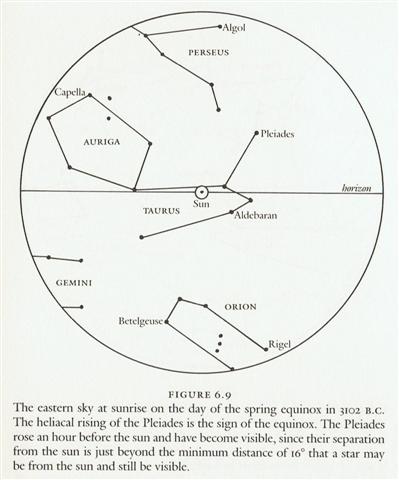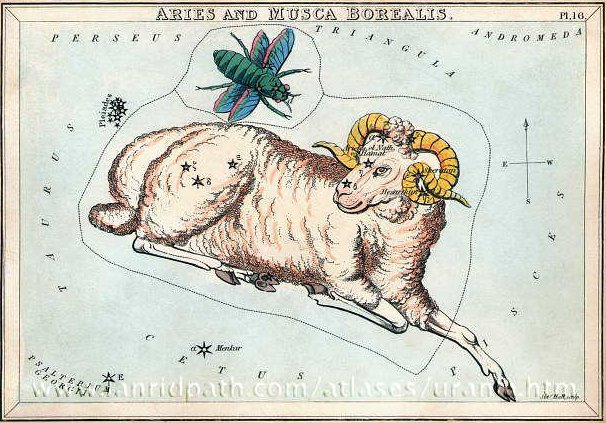88. The C text seems to tell about the stars at the time of the Bull. After 118 days (glyphs) - corresponding to 4 synodic lunar months - the Eagle was at the Full Moon and at the time of Julius Caesar, when he had correctly correlated the Sun with the ancient stars, this also meant the Sun was at the Summer Solstice.
64 right ascension days after the time of the Bull (when 0h had been at Hyadum II) - viz. at the time of rongorongo - Tauono in the Pleiades rose heliacally in May 15. Which means the corresponding day at the time of the Bull had to be when Tauono became visible again after having been too close to the Sun for observation:
... their separation from the sun is just beyond the minimum distance 16° that a star may be from the sun and still be visible ...
64 (right ascension days down to the time of Hyadum II) - 27 (right ascension days down to the time of Caesar) = 37 = 152 ("June 1) - 115 ("April 25). Also the Chorti diviners had established that their ceremony for raising the sky should begin on the 25th of April: ... On February 9 the Chorti Ah K'in, 'diviners', begin the agricultural year. Both the 260-day cycle and the solar year are used in setting dates for religious and agricultural ceremonies, especially when those rituals fall at the same time in both calendars. The ceremony begins when the diviners go to a sacred spring where they choose five stones with the proper shape and color. These stones will mark the five positions of the sacred cosmogram created by the ritual. When the stones are brought back to the ceremonial house, two diviners start the ritual by placing the stones on a table in a careful pattern that reproduces the schematic of the universe. At the same time, helpers under the table replace last year's diagram with the new one. They believe that by placing the cosmic diagram under the base of God at the center of the world they demonstrate that God dominates the universe. The priests place the stones in a very particular order. First the stone that corresponds to the sun in the eastern, sunrise position of summer solstice is set down; then the stone corresponding to the western, sunset position of the same solstice. This is followed by stones representing the western, sunset position of the winter solstice, then its eastern, sunrise position. Together these four stones form a square. They sit at the four corners of the square just as we saw in the Creation story from the Classic period and in the Popol Vuh. Finally, the center stone is placed to form the ancient five-point sign modern researchers called the quincunx ...
Later on in this series of rituals, the Chorti go through a ceremony they call raising the sky. This ritual takes place at midnight on the twenty-fifth of April and continues each night until the rains arrive. In this ceremony two diviners and their wives sit on benches so that they occupy the corner positions of the cosmic square. They take their seats in the same order as the stones were placed, with the men on the eastern side and the women on the west. The ritual actions of sitting down and lifting upward are done with great precision and care, because they are directly related to the actions done by the gods at Creation. The people represent the gods of the four corners and the clouds that cover the earth. As they rise from their seats, they metaphorically lift the sky. If their lifting motion is uneven, the rains will be irregular and harmful ... I.e. also the Chorti diviners could have used the heliacal rise of Bharani (*41) for determining right ascension days. 0h was at "May 1 (121), because 121 - 80 = 41. Furthermore, also the Arabs evidently relied on her:
414 (= 314 + 100) symbolized the new beginning because 413 = 14 * 29½.
|
||||||||||||||||||||||||||||||||||||||||||||||||||||||||||||||||||||||||||||||||||||||||||||||||||||||||||||||||||||||||||||||||||||||||||||||||||||||||||||||||||||||||||||||||||||||||||||||||||||||



